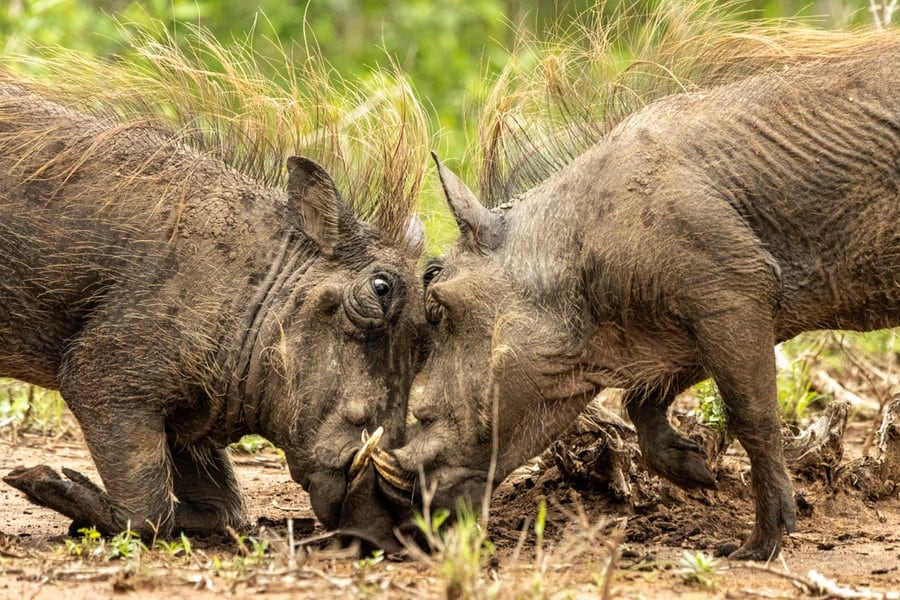fun facts about warthogs

fun facts about warthogs
Warthogs are terrestrial mammals that belong to the pig family. These medium-sized animals have stocky bodies, large heads, and upward-curving tusks. They are found throughout Tanzania, primarily in savannas, grasslands, and woodland habitats.

1. Warthogs Are Not Wild Boars
2. There Are Two African Warthogs
Tanzania is home to the common warthog (Phacochoerus africanus) and the desert warthog (Phacochoerus aethiopicus). The primary differences between these two species lie in their adaptations to their respective environments. The common warthog has a broad distribution across varied African landscapes, adapted to both lush and dry habitats. In contrast, the desert warthog’s exists only in arid regions.
3. Warthog Tusks Are Teeth
Perhaps the most distinctive feature of warthogs is their tusks. These structures are actually elongated upper and lower canine teeth that continue to grow throughout the animal’s life. The upper pair, which are more prominent, can reach lengths of up to 25 inches (64 centimeters). The lower set, though smaller, are sharper. Both tusks are used to digging for roots and tubers and for defense against predators and rivals.
4. They’re Opportunistic Omnivorous Feeders
Warthogs, primarily known as grazers, have a diet that maximizes the resources available within their environments. Their diet is comprised primarily of grasses, which constitute the bulk of their intake during the wet season. In the dry season, warthogs shift their focus to roots, bulbs, and tubers, which they forage by kneeling and digging. Finally, warthogs are opportunistic feeders and will consume animal matter when the chance arises. This includes feasting on carrion, insects, and small mammals.
5. They Don’t Really Have Warts
The facial ‘warts’ that give warthogs their name are not worts at all, but thick skin growths. The so-called warts are not uniform in appearance or distribution. They found on the face, particularly around the eyes, are believed to serve as protection during conflicts with other males or predators. The facial warts, in combination with the warthog’s tough skin, can help deflect bites or scratches.
6. Warthogs Have A Strange Defense Mechanism
During flight from predators, warthogs exhibit a peculiar behavior: they run with their tails standin g straight up in the air. Biologists believe that the tail acts as a visual guide to keep family groups together during high-speed escapes through dense vegetation (they can sprint at speeds of up to 34 mph, or 55 km/hr.). Additionally, their erect tails may confuse or distract predators.
Azas-safarisuganda.com
All Categories
Recent Posts
Birding Sports in Uganda.
Kidepo Valley National Park
Chimpanzee Habituation in Uganda
Tags
Quick booking process
+256 393254072


